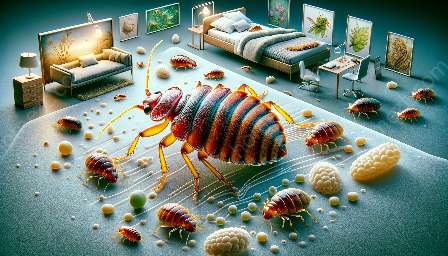Bed bugs can be a persistent and problematic issue for many households. Fortunately, there are effective prevention methods that can help protect your home from infestations. When it comes to pest control, understanding and implementing practical strategies can make a significant difference in keeping these unwanted visitors at bay. In this comprehensive guide, we will explore the best bed bug prevention methods, discuss the relationship between bed bugs and pest control, and provide valuable insights for effective management.
Understanding Bed Bugs
Before delving into prevention methods, it's essential to understand the nature of bed bugs and their behavior. Bed bugs are small, reddish-brown insects that feed on the blood of humans and animals. They are known to be elusive and nocturnal, making them difficult to detect and eradicate.
Bed bugs are notorious for their ability to infest living spaces, including homes, hotels, dormitories, and even public transportation. Once they establish a presence, bed bugs can rapidly multiply, leading to widespread infestations.
Recognizing the signs of a bed bug infestation is crucial for early detection. Common indicators include itchy bites, reddish-brown blood spots on bedding, and a musty odor in infested areas. Being vigilant and proactive can help prevent a small infestation from turning into a major problem.
Bed Bug Prevention Methods
1. Regular Inspections and Cleaning
Regular and thorough inspections of your living environment can help identify early signs of bed bugs. Focus on areas where bed bugs are likely to hide, such as mattress seams, furniture crevices, and electrical outlets. Additionally, maintaining a clean and clutter-free living space makes it easier to spot and address potential infestations.
2. Encasing Mattresses and Box Springs
Using protective encasements for mattresses and box springs can prevent bed bugs from establishing harborage in these areas. These specialized covers create a barrier that restricts bed bugs from accessing or escaping these primary hiding spots.
3. Minimize Travel Risks
When traveling, take proactive measures to minimize the risk of bringing bed bugs into your home. Inspect hotel rooms for signs of infestation, keep luggage elevated and away from furniture, and thoroughly inspect belongings upon returning home.
4. Launder and Heat-Treat Clothing and Bedding
Regularly washing and heat-treating clothing and bedding can help eliminate any bed bugs or eggs that may be present. Utilize high heat settings in the dryer to effectively kill bed bugs at all life stages.
5. Reduce Clutter and Seal Entry Points
Reducing clutter in your home and sealing potential entry points can limit the hiding places and pathways available to bed bugs. Seal cracks and crevices in walls, floors, and furniture, and consider installing door sweeps and window screens to prevent bed bugs from gaining access.
Bed Bugs and Pest Control
Bed bugs pose a unique challenge for pest control professionals due to their resilience and ability to quickly spread. Effective pest control measures for bed bugs often involve a combination of non-chemical and chemical treatments to target infestations at various life stages.
Non-chemical approaches include vacuuming, steaming, and employing heat treatments to eradicate bed bugs and their eggs. Chemical treatments, when necessary, should be administered by licensed pest control professionals using approved products and application methods.
Integrated pest management (IPM) strategies can be highly effective in addressing bed bug infestations. This holistic approach combines proactive prevention, targeted treatment, and ongoing monitoring to manage pest populations with minimal use of pesticides.
Conclusion
Implementing effective bed bug prevention methods requires diligence, awareness, and a proactive approach to pest control. By understanding the nature of bed bugs and employing practical prevention strategies, homeowners can significantly reduce the risk of infestation and minimize the need for extensive pest control interventions. Stay informed, stay vigilant, and take the necessary steps to protect your home from the challenges posed by bed bugs.






















